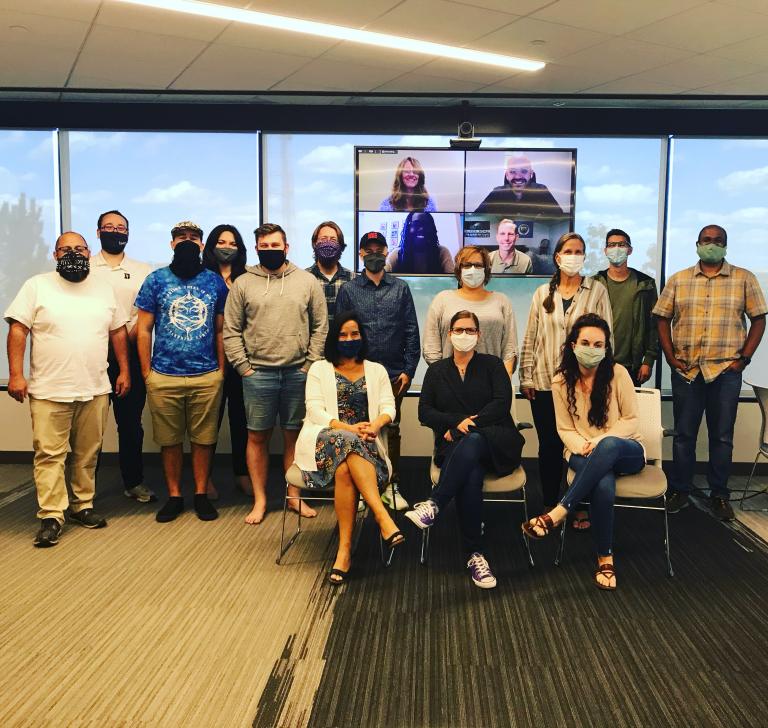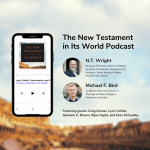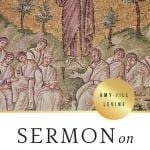Teaching is Formation
I have been “off the grid” for a while as I have been teaching a week-long face-to-face intensive in Chicago for Northern Seminary. So, right now I am in the airport, processing the exciting week of learning, conversation, and community that just ended.

I am in my twelfth year of full-time teaching, mostly at the seminary level. I have learned a lot in that time. Unfortunately most of the profs that taught me in seminary did not seem to put a whole lot of thought into a well-rounded pedagogy that seeks to form the whole person. While I value that I learned a ton of information and I received expert instruction in languages and traditional biblical interpretation, by and large a 3-hour course session consisted almost entirely of lecturing.
In no way do I feel that I have arrived as a teacher, but I turned a corner a few years ago towards taking whole-person teaching more seriously. So, I want to offer some of my tips and tricks in hopes of inspiring others, and I invite you to share your own techniques here or on social media. While this blog post focuses on seminary teaching, I think a lot of what I am saying will be relevant to teaching pastors as well.
Before we get into that, I want to talk about the academic seminary culture in the US and how it hindered me from taking risks and experimenting with pedagogy in the classroom.
What Does It Mean To Be “Academic”?
When I was in seminary, there was a kind of assumption that a professor who lectured for 150 minutes straight is a “serious” scholar and teacher; and those faculty who gave time for discussion and used object lessons were on some kind of lower tier. Some students would complain when the professor tried to engage in the material in fresh ways. I tried to share some of my techniques with a new colleague recently and he told me bluntly, “My students would riot!”
That makes me think that we need to revisit what we think counts as “academic.” And I want to say that the administration and especially the faculty should determine what is academic, not the students. They can have voice, but if they are given the social power to control the conversation, then professors like me will be afraid to experiment and do things that are “out of the box.” But there are many students who value whole-person instruction and have encouraged me in this.
Silence and Centering
Thanks especially to my experiences at Portland Seminary/George Fox (2014-2020), I learned a lot about the power of silence and centering prayer at the beginning and end of class. Just a few minutes of focused silence and centering really helps students to be present. Too few of us get real silence in our day, so it is a gift and blessing. It is a chance to invite God into the classroom (i.e., acknowledge his presence). It also naturally lowers stress and anxiety for most people. Sometimes I give a centering image or verse, but most of the time I simply encourage silencing the mouth and heart and concentrating on being fully present. (Credit to MaryKate Morse and Darla Tillman-Samuelson for inspiration)
Class Ethos
Every time I teach a new course, I give my students a class ethos: RICE (I’m a good Indian!): Respect, Integrity, Care, Enthusiasm.
Here is what I tell students:
Respect: Listen and respect everyone. Ask clarifying questions and “believe the best” in the other. Don’t be defensive, but generate conversation. Be a “learner” at all times.
Integrity: Be fully present. Set aside distractions, social media, email. Be yourself and be your whole self in this place.
Care: you are not a customer or “consumer.” You are a person in community. You are not individuals in a classroom. You are people in relationship. So look after one another. Learn from one another. Care for one another. Minister to one another. Keep your eyes open—is someone tired? Upset? Having a hard day? Need prayer? Need a smiling face?
This kind of ethos really helps to set up an inviting culture from the start.
Less is More
In my early years of teaching, Jack Levison took me under his wing and gave me lots of great tips about teaching and thriving in the academic world. I vividly recall him saying, “I am learning to do more and more on less and less.” By that he meant he was trying not to cram lots of information into the class to “get through the material.” Rather, he was aiming for depth in a few big ideas, rather than covering a lot of stuff on the surface level. I admit, I kinda dismissed his wisdom at the time, but now I am finally coming around. Students can get the breadth from the textbooks. What they benefit from in the classroom is the professor leaving their passion-imprint on the students. You (professors) have precious little time to pass down your convictions and passions to the students. They can learn dates and figures elsewhere. The classroom is a precious commodity and the rule of thumb taught to me by Jack and others is: do in the classroom ONLY what you can’t do outside of the classroom. Spend that time wisely.
So, I encourage you to decide early in the course: what are the ten big ideas or values that I want to transfer from my heart to the students? Then build your classroom time around that. Resist the temptation to do more. Do less, but deploy a comprehensive learning plan to drill those “big ten” in.
Small Group Discussion
I encourage very small groups (2-3 people) for discussion, and I don’t “sit in” on them because I want students to not feel like they have to impress me. In a 3-hour block, students might have 2 or 3 20-minute discussion times. Students need to process what they are learning. It is not a gimmick and we can’t assume they are verbally processing outside of class. This is important. The fact that some students don’t want discussion time is a sign of unhealthy attitudes towards learning. Peer learning and conversation is crucial to “thinking out loud” about the implications and dynamics of the material we are teaching.
Journaling in Class
This is a new feature I have been introducing more recently in my career. Our students’ lives are so busy. They have school. They have work. Some have families. Some take care of relatives. Some have health challenges. Some have long commutes. In all the busyness and noise, reflective journalism is sometimes hard to maintain and achieve outside of class. I am becoming a believer in the idea of using the classroom time as a laboratory for nurturing certain “learning habits” or “virtues.” So, I make time for 5 minutes of journaling at the end of every teaching “session” (~3 hour block). They can write, doodle, pray, or sit quietly and think. Nothing is collected from this journal. They can write as much or as little as they want. It is a time for prayer, reflection, self-examination, and making the material person to themselves and their community.
Make it Beautiful
As much as I can, I try to use music, art, and poetry to give life to some of the ideas and theories we discuss. That is because (1) it reinforces the importance of imagination for learning and creating, (2) it jars students into thinking about the material in fresh ways, and (3) it gives the material an aesthetic texture. I really want my students to engage with the course material creatively in their discussions and assignments, so it offers some inspiration to learn from professional artists of different kinds.
For example, I used a “freedom” sculpture in Philadelphia to talk about the theme of freedom in Galatians.

Final Thoughts
Again, I don’t pretend to know it all, but students this week responded well to many of these “out-of-the-box” features of class-room time. I encourage you to experiment, take risks, and think about what kind of fully-formed pastors you want in churches; not just eggheads or well-informed preachers, but people who are also socially and emotionally healthy, and formed to love God and love neighbor with their whole selves. It’s time to change the seminary culture. Let me empower you to make some changes for the better of your learning community.












